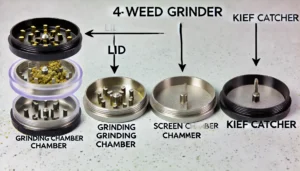Seeding a Weed-Infested Lawn: How to Restore a Healthy Green Yard
Take Back Control of Your Lawn with Overseeding
A lush, green lawn is the dream of every homeowner, but when weeds take over, that dream can quickly turn into frustration. The good news? You don’t have to start from scratch. Overseeding—a simple yet effective process of planting new grass seed over an existing lawn—can help you reclaim your yard from unsightly weeds and patchy grass.
Why Overseed a Weedy Lawn?
Overseeding strengthens your lawn by filling in bare spots, improving grass density, and crowding out weeds naturally. Within a few weeks, you’ll start to see visible improvements as new grass takes root and thickens your lawn. A thick lawn is the best defense against weeds, preventing them from taking root and spreading.
The best times to overseed are early spring and late summer to early fall. This ensures that new grass has the ideal growing conditions while minimizing competition from weeds.
Common Causes of Weedy Lawns
Understanding the root causes of a weedy lawn is essential before overseeding. Addressing these issues first will ensure your new grass has the best chance to thrive, reducing the likelihood of weeds returning.
Before overseeding, it’s important to understand what led to a weed infestation in the first place. Common reasons include:
- Mowing too short – Weakens grass and allows weeds to thrive.
- Over or under-watering – Poor moisture balance creates stress on grass.
- Compacted soil – Restricts root growth and promotes weeds.
- Lack of nutrients – Weak grass struggles to compete with aggressive weeds.
Step-by-Step Guide to Overseeding a Weedy Lawn
- Mow and Remove Weeds
- Mow the lawn as short as possible (about 1.5 inches) to ensure new seeds reach the soil.
- Pull large weeds manually or apply a selective herbicide at least three weeks before overseeding.
- Dethatch and Aerate
- Remove excess thatch to expose the soil for better seed-to-soil contact.
- Aerate the lawn to break up compacted soil and improve nutrient absorption.
- Amend the Soil
- Spread a thin layer of compost to enrich the soil.
- Conduct a soil test and apply necessary amendments to balance pH and nutrients.
- Choose the Right Grass Seed
- Select a grass variety suited to your climate, sunlight, and moisture levels.
- For shaded areas, use fescue; for sunny areas, Bermuda or Kentucky bluegrass.
- Spread the Grass Seed
- Use a broadcast spreader for even distribution.
- Aim for 15-20 seeds per square inch to promote thick growth.
- Fertilize for Strong Growth
- Apply a starter fertilizer high in phosphorus to encourage root development.
- Water Properly
- Lightly water the lawn 2-3 times daily to keep the soil moist but not soaked.
- Maintain this schedule for the first 2-3 weeks until seedlings establish.
- Once new grass reaches 3-4 inches, reduce watering to deep, infrequent sessions.
- Mow and Maintain
- Wait until the new grass is at least 3-4 inches tall before mowing.
- Set mower height to 3 inches or higher to encourage strong root growth.
Preventing Future Weed Infestations
- Mow at the right height – Taller grass shades out weeds.
- Feed your lawn – Apply fertilizer twice a year to maintain thick, healthy grass.
- Water deeply and infrequently – Encourages deeper roots and prevents weeds.
- Aerate annually – Reduces soil compaction and improves nutrient absorption.
- Use mulch or ground cover plants – Helps suppress weed growth and retain soil moisture.
- Mow at the right height – Taller grass shades out weeds.
- Feed your lawn – Apply fertilizer twice a year to maintain thick, healthy grass.
- Water deeply and infrequently – Encourages deeper roots and prevents weeds.
- Aerate annually – Reduces soil compaction and improves nutrient absorption.
Get Professional Help
If overseeding sounds overwhelming, consider professional lawn care services. Lawn specialists can analyze your yard’s needs, recommend the best grass seed, and implement a tailored overseeding and maintenance plan.
By following these steps, you can transform your weed-infested lawn into a lush, vibrant outdoor space that enhances your home’s curb appeal and enjoyment. Don’t let weeds win—take control of your lawn today!













